For additional information relating to this article, please contact:
October 26, 2016JOB VACANCIES AND WAGES, 2016Q2 Statistics Canada has released its quarterly job vacancy and wage survey (unadjusted for seasonality). This data provides insight into what portion of jobs in a particular region, sector or occupation are vacant. It also provides information on the wages offered and specific requirements for each type of vacant job. A higher job vacancy rate indicates a tighter labour market where it is more difficult for employers to find suitable candidates for the positions offered. A lower job vacancy rate signals labour market slack and potentially more job seekers competing for each vacant position.
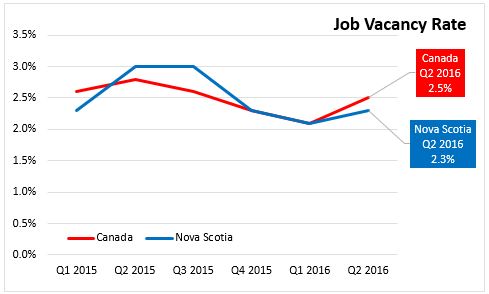
Nova Scotia's job vacancy rate was 2.3 per cent in the second quarter of 2016, representing 8,695 job vacancies. This is up from 2.1 per cent vacancy rate reported in the previous quarter and down from 3.0 per cent in the second quarter of 2015. The national job vacancy rate was 2.5 per cent, with higher vacancy rates in British Columbia, Ontario, and Prince Edward Island offset by lower vacancy rates in Newfoundland and Labrador, Quebec and the Prairie provinces. The average wage offered for a vacant position in 2016Q2 was unchanged compared to 2015Q2 at $16.60/hour in Nova Scotia, while the national average increase by $0.55 to $19.35.
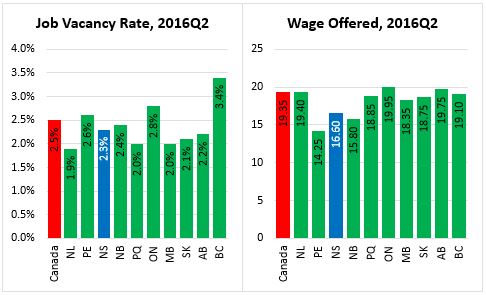
Compared to the second quarter of 2015, the vacancy rate declined in all provinces except British Columbia and Prince Edward Island. The largest declines were in Alberta (-1.2 percentage points in the rate, -39.1 per cent in total vacancies) and Sasktachewan (-1.1 pp, -34.4 per cent). The average wage offered for vacant positions rose in all but three provinces, with the largest increases in Prince Edward Island and British Columbia and declines in Manitoba and Alberta.
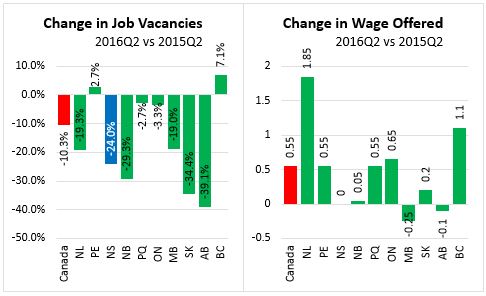
Among Nova Scotia's economic regions in 2016Q2, the vacancy rates were higher in Annapolis Valley and Southern NS and lower in Cape Breton and Halifax. The average wages offered for vacant positions were highest in Halifax. Wages offered for vacant positions in other regions were $0.70-$3.50 less per hour.
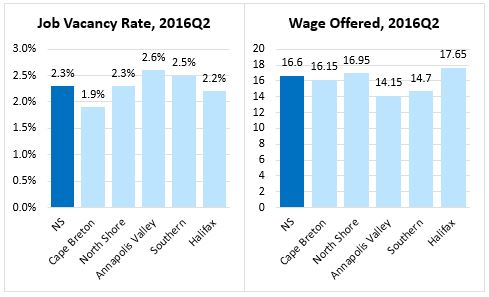
Across sectors, Nova Scotia's job vacancy rates were typically lower than the national average in the first quarter of 2016. However, there were some exceptions: Nova Scotia reported higher vacancy rates for administrative and waste management; arts, entertainment, and recreation; and other servivces. (No data are available for NS vacancies in mining/oil/gas, utilities, real estate and rentals, and company management). The wages offered for vacant positions in Nova Scotia are mostly lower than the wages offered through the rest of the country, with the exception of real estate, educational services, and professional and technical services (No data are available for NS wages offered in management and utilities).
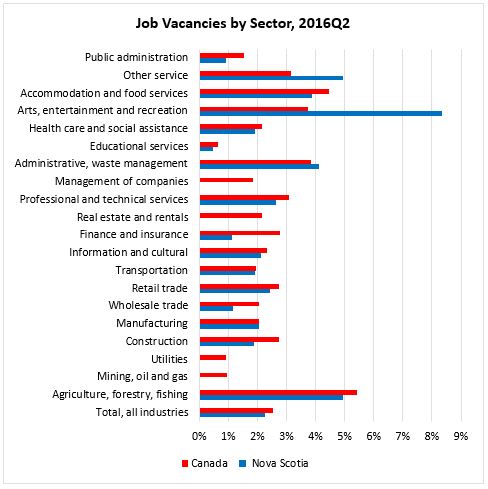
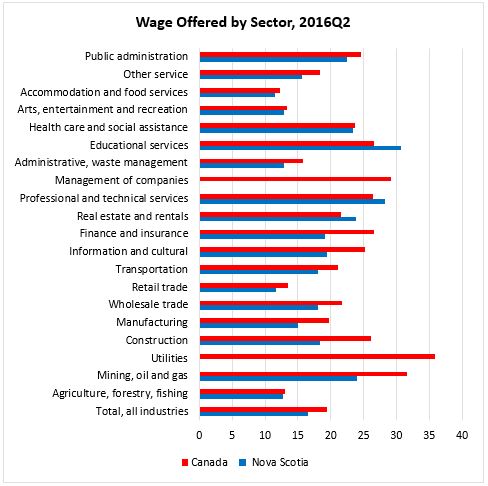
Of the 8,695 job vacancies reported in Nova Scotia during the first quarter, 40.3 per cent were in sales and service occupations. The next largest occupations for which there were vacancies were trades/transport/equipment operators and health. The wages offered for vacant Nova Scotia occupations were lower than the national average in every occupational category.
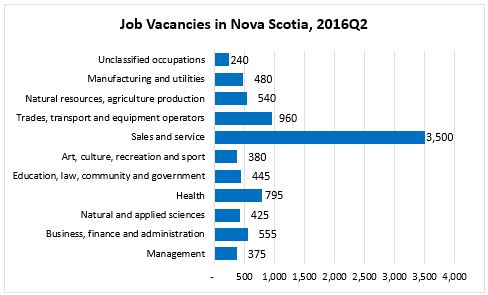
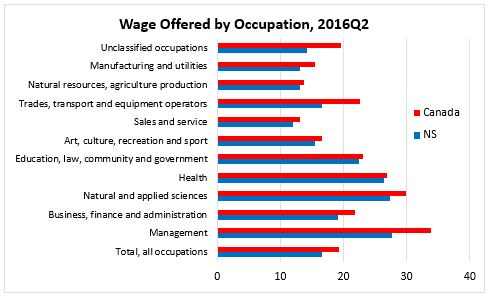
Over half of the vacant positions in Nova Scotia during 2016Q2 required only high school or lower levels of education. The wages offered for these positions were lower than for those requiring more education. The highest wages were offered for those with university education beyond a bachelor's level, which had the smallest number of vacancies.
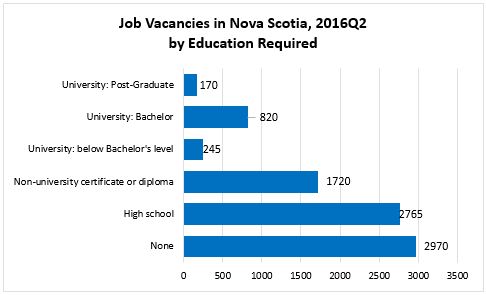
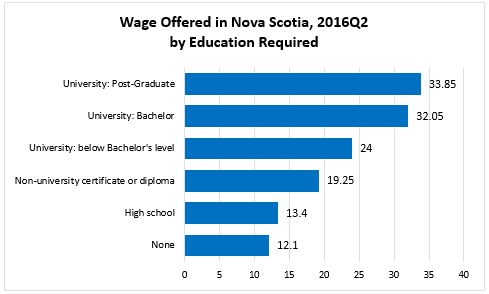
Most vacant position had low experience requirements. Those vacant positions also offered lower wages than those with higher experience requirements. Although the highest wages were offered for those occupations requiring over 8 years' of experience, there were a small number of such positions vacant.

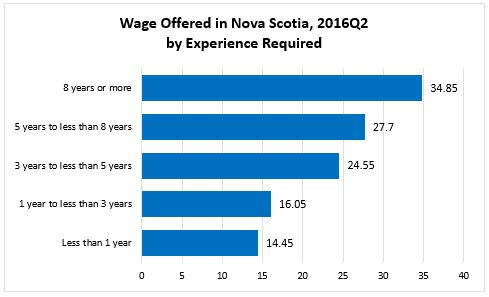
Note: The data referenced above is from the quarterly Job Vacancy and Wages survey (JVWS). Statistics Canada also publishes monthly job vacancy data in from the Job Vacancy Statistics (JVS) component of the Survey of Payroll Employment and Hours. Due to differences in the target population and sample sizes, the job vacancies reported in the JVWS tend to be higher than those reported in the JVS.
Statistics Canada: CANSIM tables 285-0001, 285-0002, 285-0003, 285-0004